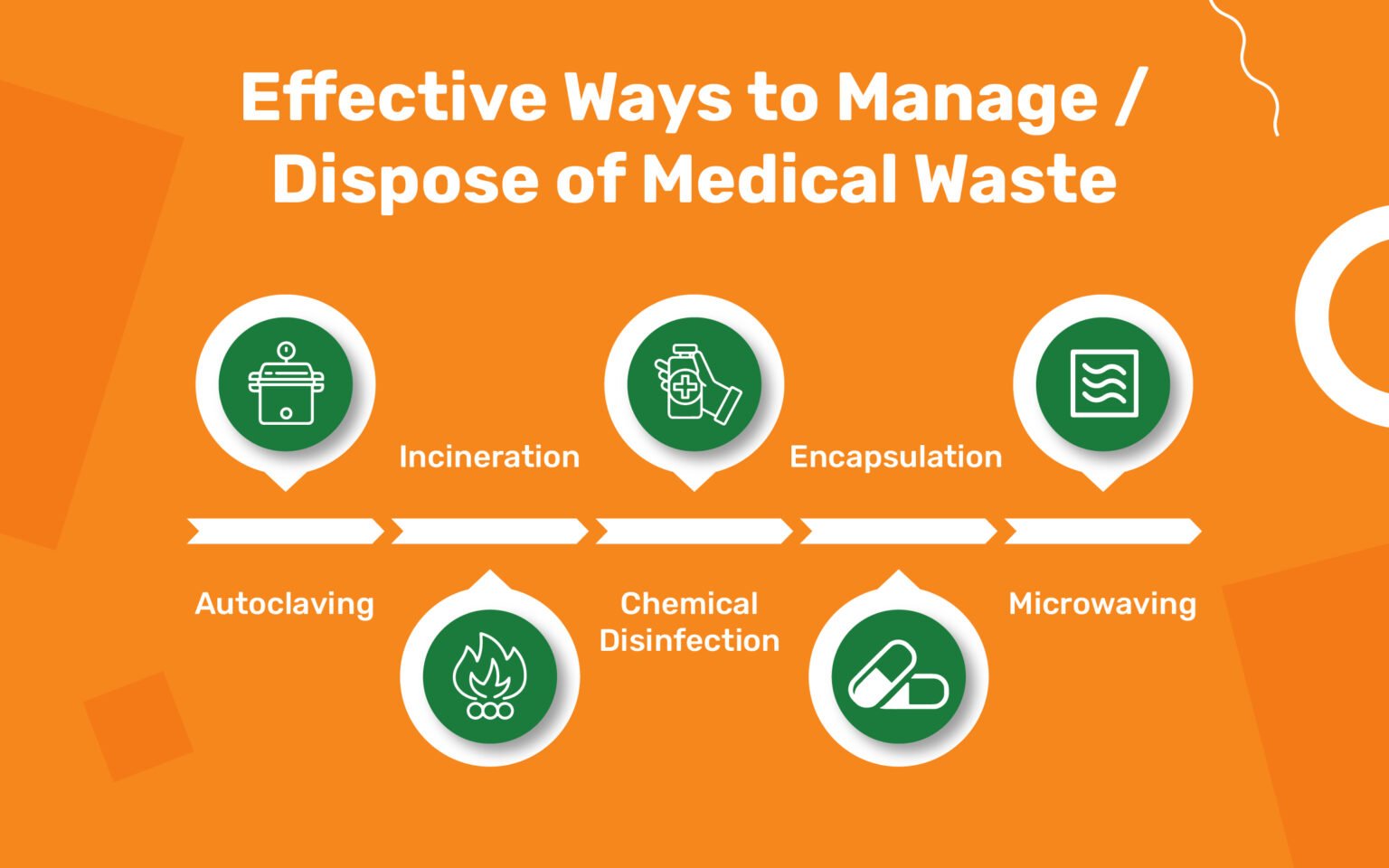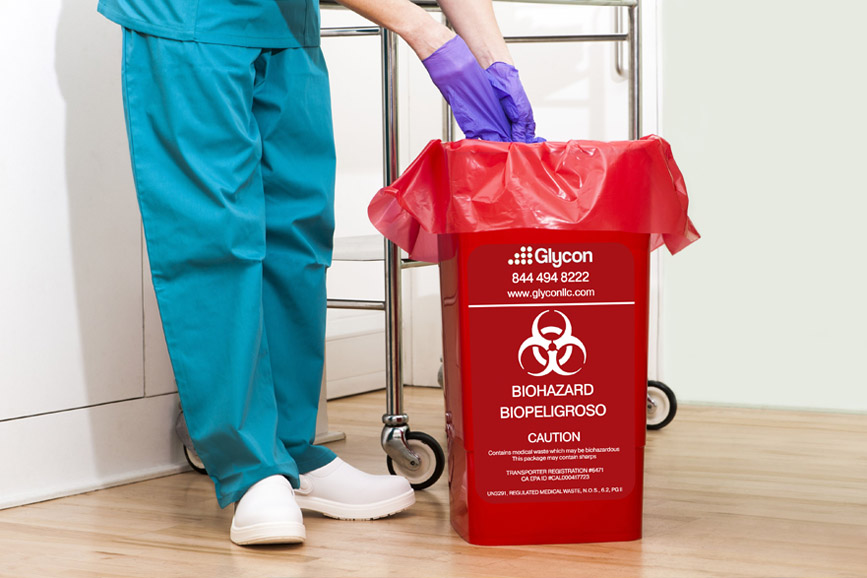Protecting Wellness: Revealing the Essence of Expert Medical Waste Removal
Protecting Wellness: Revealing the Essence of Expert Medical Waste Removal
Blog Article
Keep Ahead of Regulations: Professional Recommendations on Medical Garbage Disposal
In a globe where the health care industry is constantly developing, it is critical for clinical facilities to remain in advance of laws when it comes to the correct disposal of medical waste. From understanding the various classifications of medical waste to applying the ideal collection and segregation approaches, this discussion will certainly provide actionable pointers and valuable insights to aid centers remain ahead of guidelines in the ever-changing landscape of medical waste disposal.
Recognizing Medical Waste Categories
Recognizing medical waste groups is necessary for appropriate disposal and management in health care centers. Medical waste describes any waste created by healthcare tasks that may position a threat to public health and wellness or the setting. It is vital to classify clinical waste properly to guarantee its safe handling, disposal, transport, and therapy.
There are numerous categories of clinical waste that healthcare facilities need to be aware of. One of the most common classifications consist of infectious waste, pathological waste, sharps waste, pharmaceutical waste, and chemical waste. Each classification has certain standards and regulations for its appropriate monitoring and disposal.
Infectious waste includes materials polluted with blood or other bodily liquids, such as handwear covers, dress, and laboratory cultures. Pathological waste refers to human cells, body organs, or body components that require special delivery and disposal. Sharps waste includes used needles, syringes, and other sharp items that can trigger injury and transfer infections. Drug waste consists of ended, extra, or infected drugs that require careful handling and disposal. Chemical waste includes solvents, disinfectants, and other chemical substances made use of in healthcare facilities.
Remaining Up-To-Date With Regulatory Modifications
Staying existing with governing modifications is critical for healthcare facilities to make sure compliance and appropriate administration of medical garbage disposal. medical waste removal services. With policies continuously evolving, it is crucial for healthcare centers to remain current to prevent penalties, penalties, and possible injury to the atmosphere and public health and wellness
To remain in advance of regulatory changes, healthcare centers should develop a system for tracking and monitoring updates. This can be done by subscribing to regulatory e-newsletters, attending meetings and workshops, and proactively taking part in market organizations. Furthermore, centers ought to mark an employee or team in charge of staying notified and sharing details to appropriate stakeholders.
Normal communication with regulative firms is likewise vital. Healthcare facilities must establish partnerships with local, state, and government agencies to guarantee they know any kind of modifications in laws that may affect their waste monitoring practices. This can be done via routine conferences, engagement in public comment periods, and aggressive interaction with regulatory firms.
In addition, medical care facilities need to think about partnering with waste management business that concentrate on clinical garbage disposal (medical waste disposal services with WasteX). These companies are commonly well-versed in the newest laws and can provide guidance and support to guarantee conformity
Applying Proper Collection and Segregation Methods
To efficiently handle medical waste disposal, medical care centers need to develop correct collection and partition techniques based on governing standards. Applying these approaches makes certain the secure handling and disposal of possibly unsafe products, secures the atmosphere, and lessens the danger of injuries and infections to healthcare workers and the general public.
Appropriate collection and segregation methods entail making use of marked containers and classifying systems. Medical care centers need to offer plainly identified containers for different kinds of clinical waste, such as sharps, infectious waste, pharmaceutical waste, and non-hazardous waste. medical waste disposal services with WasteX These containers ought to be color-coded and clearly significant to prevent confusion and advertise very easy recognition.
In addition, health care facilities need to train their staff on the check my source correct procedures for accumulating and segregating medical waste. This consists of educating them on the various kinds of waste, the appropriate containers to use, and the relevance of complying with guidelines and laws. Routine training sessions and correspondence course need to be conducted to guarantee that team member stay up-to-date on ideal practices.
Furthermore, healthcare centers ought to develop a system for regular collection and disposal of clinical waste. This may involve partnering with qualified waste administration firms that focus on clinical waste disposal. These business will make certain that the gathered waste is transported and thrown away in compliance with regulative needs.
Selecting the Right Disposal Methods

Incineration is just one of one of the most usual and effective techniques for dealing with specific kinds of clinical waste, such as pathological waste and sharps. It includes the controlled burning of waste at high temperatures, minimizing it to ash. Nevertheless, incineration can release unsafe contaminants right into the air and contribute to air pollution.

Other disposal approaches consist of chemical treatment, microwave therapy, and landfilling. Chemical therapy involves the usage of chemicals to neutralize the waste and decontaminate. Microwave treatment makes use of microwave energy to warm and disinfect the waste. Landfilling entails burying the waste in an assigned landfill area (medical waste disposal services with WasteX). Landfilling ought to be the last hotel due to the possible threat of contamination to dirt and groundwater.
Making Certain Conformity Via Documents and Training
After carefully considering the appropriate disposal methods for medical waste, health care facilities should guarantee compliance with policies and reduce ecological influence by executing effective documentation and training procedures. This action is crucial in keeping a safe and lasting environment for both healthcare employees and the basic public.

Training is just as essential in guaranteeing conformity with regulations. Healthcare workers that take care of medical waste ought to get ideal training on waste segregation, dealing with, and disposal treatments. This training needs to cover subjects such as the proper use personal protective devices, identification of different types of waste, and the proper disposal approaches for each waste category. By offering comprehensive training, healthcare facilities can equip their personnel click over here now to make educated decisions and lessen the danger of improper waste disposal.
Final Thought
To conclude, staying ahead of guidelines in medical waste disposal is vital for health care facilities. medical waste removal. Understanding the various groups of medical waste, staying upgraded with regulative changes, implementing correct collection and partition methods, choosing the proper disposal techniques, and guaranteeing conformity through documents and training are all necessary steps. By adhering to these standards, healthcare companies can efficiently handle and dispose of clinical waste in a risk-free and responsible manner
From recognizing the different groups of medical waste to applying the best collection and partition techniques, this discussion will certainly offer beneficial insights and workable tips to help centers stay in advance of policies in the ever-changing landscape of clinical waste disposal. - medical waste disposal services with WasteX
The most usual groups include contagious waste, pathological waste, sharps waste, pharmaceutical waste, and chemical waste. Health care facilities must give plainly labeled containers for different types of medical waste, such as sharps, infectious waste, pharmaceutical waste, and non-hazardous waste. Healthcare centers should establish a comprehensive system to tape-record and track all elements of medical waste disposal, including types of waste created, quantities, and disposal approaches made use of. Medical care employees that manage medical waste needs to receive appropriate training on waste partition, handling, and disposal treatments.
Report this page